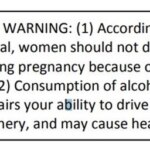Almost as soon as I posted on workforce incentive programs, up pops a New York Times article on the use of incentives in addiction treatment — specifically why, given the research, they aren’t more widely used:
This Addiction Treatment Works. Why Is It So Underused?
It’s a good question for which there may not be an easy answer. I recall that when the model was introduced some years ago, there were already concerns on the table. One I remember: That it was too much like paying people to come to treatment– a bad precedent, some believed. “I signed up to treat patients,” argued a veteran clinician. “Not to run a damn lottery.” An overreaction, perhaps. Still, it was echoed by others. The researchers who designed the incentive programs were accustomed to paying people to participate in their studies, so they didn’t see anything unusual. “Why else would they put up with us?” joked a professor.
Anyway, impressed by the data, I suggested incentives to some of my clients who were struggling with attendance and retention problems. Some took me up on it. When I checked back later to find out how things went, I was a little surprised at their mixed reactions.
That’s always a possibility because of the innate differences between a research environment and life in a real-world treatment setting. Researchers can carefully select their subjects, monitor them closely, provide structure and support not found in the clinic. The idea is to create near-perfect conditions for evaluation. In most respects, it works.
A treatment program is something quite different. Goals are set not by a research team, but by each client. The quality of the relationship with the clinician is probably more important to the outcome than which approach is used. A client may be assigned to one ASAM level of care simply because a more suitable one wasn’t available.
These and a host of others factors are at work.
At some point someone (often not just one person) is found using a program voucher or gift card to buy booze at the discount mart, or trading it on the street for drugs. That’s not good.
Then there’s the issue of expense, which the TImes article addresses. Payers have been reluctant to reimburse programs for the cost of incentive programs. Those can add up. “We pay for treatment,” they can insist, “but a gift card is not treatment. That’s a slippery slope for us,” one insurance exec explained.
One program complained that the incentive program seemed to work best with people who were already more motivated, and not as well with more resistant clients. Kind of defeats the purpose, I suppose.
Once again, I’m confident some of the issues stem from lack of experience or simple impatience with learning something new. Still, they should be addressed if the aim is to gain widespread acceptance.












